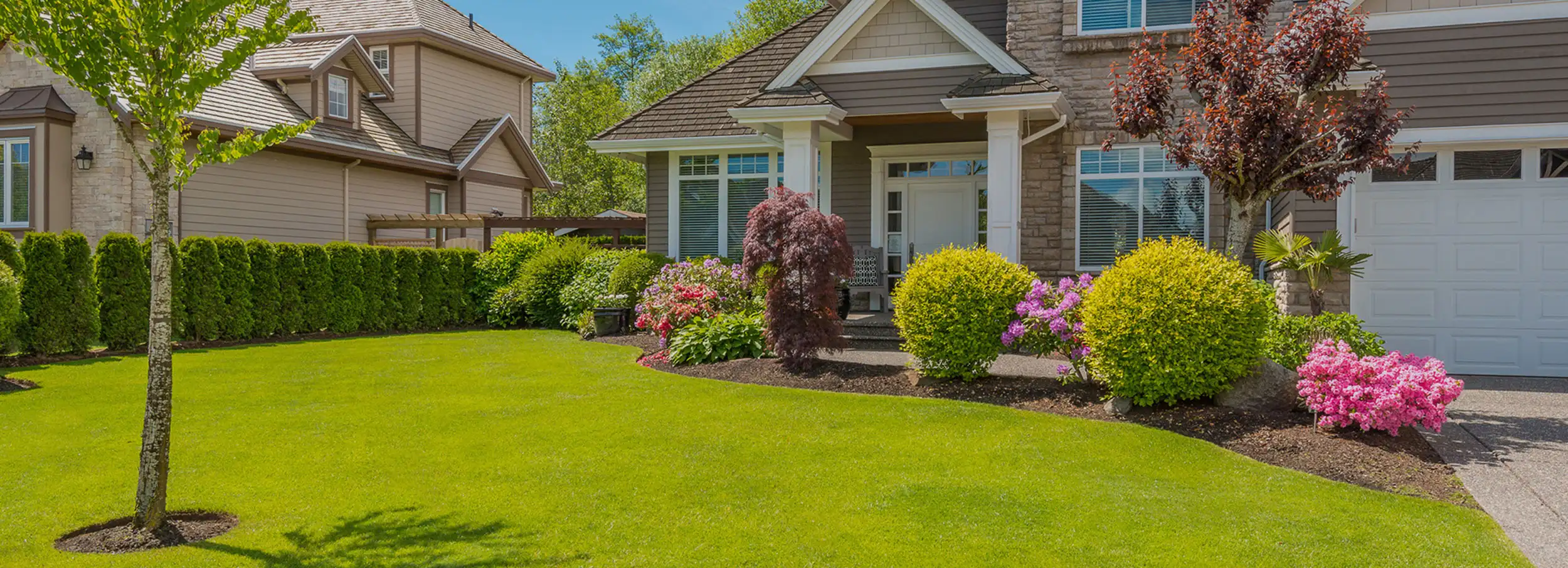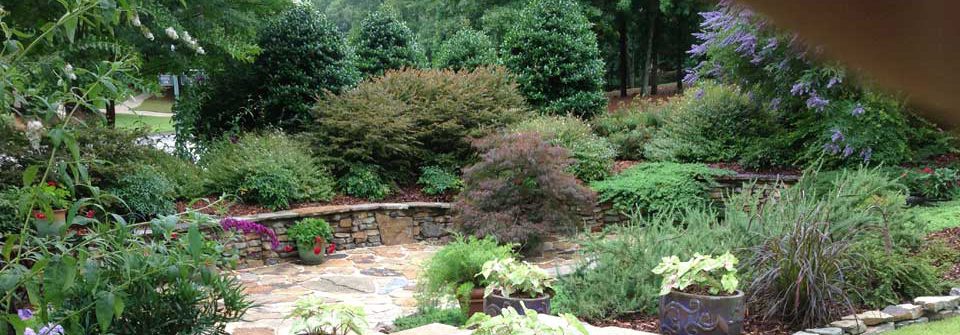Premier Landscaping Company Jacksonville: Exceptional Services for Beautiful Gardens
Premier Landscaping Company Jacksonville: Exceptional Services for Beautiful Gardens
Blog Article
Elevate Your Residential property's Aesthetic With Lasting Landscaping Designs and Eco-Friendly Practices

Advantages of Lasting Landscape Design
Applying sustainable landscaping methods not only saves natural deposits but additionally promotes biodiversity and improves general ecological health and wellness. By selecting environmentally friendly landscape design techniques, homeowner can reap a plethora of advantages that extend past just visual charm. One significant advantage is the decrease of water intake through using drought-resistant plants, rainfall yards, and reliable irrigation systems. This not only reduces utility expenses however also adds to water preservation initiatives in the area.
Moreover, lasting landscape design can boost dirt health by minimizing using chemical plant foods and chemicals, therefore producing a healthier atmosphere for plant growth and helpful soil organisms. This, consequently, boosts the general resilience of the landscape to stand up to environmental stress factors and climate modification influences - landscaping companies Jacksonville. Additionally, lasting landscape design practices can bring in varied wild animals, consisting of pollinators like and butterflies, cultivating an extra well balanced and vivid community within the home
Incorporating Native Plants
To develop upon the benefits of sustainable landscaping, a calculated emphasis on incorporating native plants can even more enhance environmental resilience and promote biodiversity within the landscape. Native plants are varieties that normally occur in a particular area and have developed to grow in the regional environment, dirt conditions, and ecological community. By including native plants in landscaping layouts, homeowner can lower water use, reduce the need for chemical pesticides and plant foods, and sustain the local wild animals population.
Including indigenous plants also aids in preserving the special character and identification of an area's vegetation. These plants frequently call for much less maintenance when developed, making them a lasting and affordable landscape design solution over time. In addition, indigenous plants can bring in indigenous pollinators like butterflies and bees, adding to the general wellness of the community.
When selecting native plants for landscape design tasks, it is necessary to choose species that are well-suited to the specific ecological problems of the site. Consulting with neighborhood nurseries or agricultural yards can give useful assistance on selecting the appropriate native plants for a specific location. By integrating indigenous plants into landscape design designs, building proprietors can create beautiful, sustainable outdoor areas that benefit both the setting and the area.

Water Conservation Methods
Effective watering approaches play an essential duty in lasting landscaping techniques, making sure optimum water conservation initiatives in outdoor spaces. Carrying out methods such as drip watering, rain harvesting, and clever irrigation systems can dramatically decrease water waste while maintaining a healthy landscape. Leak watering provides water straight to the roots of plants, reducing evaporation and runoff. Rainwater collecting entails gathering rainwater from roofings and saving it for later use in irrigation, minimizing the dependence on community water resources. Smart irrigation systems utilize climate information and soil wetness levels to change watering routines, preventing overwatering and promoting water efficiency.
Along with advanced irrigation methods, xeriscaping is one more water-saving landscaping method that concentrates on utilizing drought-resistant plants, compost, and reliable watering to develop a low-water landscape layout - bush removal Jacksonville. By picking indigenous plants that are fit to the neighborhood environment and dirt problems, building proprietors can minimize the need for too much watering, inevitably conserving water and promoting a lasting outside explanation setting
Eco-Friendly Hardscaping Concepts
Enhancing outside rooms with eco-friendly Recommended Site hardscaping attributes can contribute substantially to sustainable landscaping practices. When taking into consideration hardscaping components, go with products like recovered wood, recycled concrete, or natural rock to decrease environmental effect. These products not only add a distinct aesthetic interest your exterior area but additionally minimize the requirement for new sources removal.
Executing permeable paving alternatives such as crushed rock or absorptive concrete can help minimize water overflow and advertise groundwater recharge. These choices allow rainwater to seep right into the ground, stopping disintegration and reducing the worry on stormwater systems.
Incorporating native plants right into hardscaping styles can further enhance eco-friendliness by supporting neighborhood wildlife and decreasing the demand for extreme watering or chemical treatments. By including eco-friendly wall surfaces or vertical gardens, you can present much more plant life into metropolitan setups, enhancing air quality and biodiversity.
Including energy-efficient illumination, such as solar-powered LEDs, into hardscaping layouts can minimize electricity consumption and reduced your residential or commercial property's carbon impact. Prioritizing environment-friendly hardscaping ideas not just enhances the beauty of your outdoor space but likewise shows a dedication to environmental stewardship.
Upkeep Tips for Sustainable Landscapes

Frequently prune plants to advertise healthy and balanced growth and prevent overgrowth that can lead to pest diseases or problems. Use organic fertilizers to nourish the dirt and plants without hazardous chemicals that can leach into the environment.
Final Thought
Finally, sustainable landscape design practices provide numerous benefits for homeowner, from boosting the visual appeal of the environments to promoting environmental preservation. By integrating indigenous plants, read this article carrying out water preservation strategies, and using environment-friendly hardscaping ideas, home proprietors can develop attractive landscapes that are also eco accountable. With appropriate maintenance, sustainable landscapes can flourish and add to a much healthier ecological community for both human beings and wildlife.
In addition, lasting landscaping can boost soil wellness by decreasing the usage of chemical plant foods and pesticides, thereby developing a healthier environment for plant development and beneficial soil organisms.To build upon the benefits of sustainable landscaping, a calculated emphasis on integrating indigenous plants can additionally enhance eco-friendly strength and advertise biodiversity within the landscape. By consisting of native plants in landscaping designs, property owners can minimize water usage, decrease the demand for chemical pesticides and fertilizers, and sustain the neighborhood wild animals population.
These plants usually need less maintenance when developed, making them a cost-efficient and sustainable landscaping option in the long run. By integrating indigenous plants right into landscaping styles, home owners can create gorgeous, lasting exterior areas that benefit both the area and the atmosphere.
Report this page